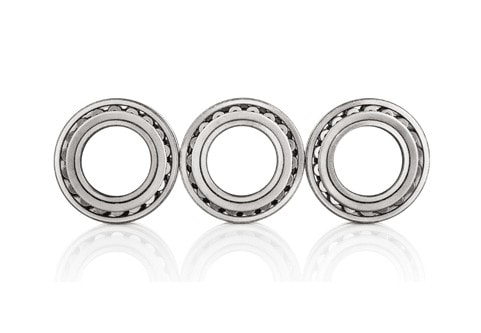The Facts About Volution Bearing Uncovered
The Facts About Volution Bearing Uncovered
Blog Article
Volution Bearing Fundamentals Explained
Table of ContentsSome Known Incorrect Statements About Volution Bearing Excitement About Volution BearingGet This Report on Volution BearingGet This Report about Volution Bearing
An axial (or thrust) bearing load is when pressure is alongside the axis of the shaft. A radial bearing load is when pressure is perpendicular to the shaft. After that a mix bearing lots is when parallel and vertical forces generate an angular force family member to the shaft. Ball bearings are made with spherical rounds and can disperse loads over a medium-sized surface location.Below is a fast recommendation for the type of bearing load and the very best sphere bearing for the task: Radial (perpendicular to the shaft) and light tons: Choose radial round bearings (likewise referred to as deep groove sphere bearings). Radial bearings are some of one of the most common kinds of bearings on the market.
Roller bearings are developed with cylindrical rollers that can distribute tons over a bigger surface area than sphere bearings. Below is a fast reference for the kind of birthing load and the finest roller bearing for the work: Radial (perpendicular to the shaft) tons: Pick typical round roller bearings Axial (propelled) (parallel to the shaft) tons: Choose round drive bearings Combined, both radial and axial, tons: Pick a taper roller bearing The rotational speed of your application is the next aspect to look at when selecting a bearing.
They execute better at higher speeds and supply a higher speed array than roller bearings. One reason is that the contact between the rolling aspect and the raceways in a ball bearing is a point rather of a line of call, like in roller bearings. Because rolling elements press into the raceway as they roll over the surface area, there is a lot less surface area contortion occurring in the point loads from ball bearings.
3 Simple Techniques For Volution Bearing

If this occurs, a simple and usual solution is to switch over the ball bearing material from steel to ceramic. This maintains the bearing dimension the same but uses approximately a 25% higher speed rating. Because ceramic material is lighter than steel, ceramic balls produce less centrifugal pressure for any type of provided rate.
One factor is that the spheres are smaller and smaller rounds consider much less and produce much less centrifugal pressure when turning. Angular get in touch with bearings also have a built-in preload on the bearings which collaborates with centrifugal pressures to properly roll the spheres in the bearing. If you are creating a high-speed application, then you'll desire a high-precision bearing, normally within the ABEC 7 precision course.
All about Volution Bearing
When the bearing is being used at high rates, the balls quickly roll over the bearing raceway with less dependability which can lead to a bearing failing. High precision bearings. manufacturing athens, ga are produced with rigorous requirements and have really little variance from the specifications when generated. High precision bearings are reliable for applications that go quick due to the fact that they guarantee great round and raceway communication.
Some applications, like cutting tool pins, will just permit a small variance to take place on its rotating components. If you are engineering an application similar to this, then choose a high precision bearing since it will produce smaller sized system runouts due to the limited tolerances the bearing was produced to. Bearing rigidity is the resistance to the pressure that creates the shaft to depart from its axis and plays a vital role in reducing shaft runout.

When the angular get in touch with bearings are mounted, the offset is removed which triggers the balls to press into the raceway without any kind of outside application pressure. This is called preloading and the imp source process enhances bearing rigidity even prior to the bearing sees any type of application forces.
The 6-Second Trick For Volution Bearing
Lubrication produces a film of oil between the rolling aspect and the bearing raceway that helps stop rubbing and overheating. One of the most usual sort of lubrication is oil, which includes an oil with a thickening representative. The thickening representative keeps the oil in position, so it will not leave the bearing.
This is called the application or bearing n * dm worth. Before you pick a grease, you require to discover your applications ndm value.
Contrast your ndm value to the oil's max speed value, situated on the datasheet. If your n * dm worth is higher than the grease max speed worth on the datasheet, then the grease won't have the ability to supply adequate lubrication and early failure will certainly occur. An additional lubrication option for high-speed applications are oil haze systems which mix oil with pressed air and after that infuse it right into the bearing raceway at metered intervals.
Report this page